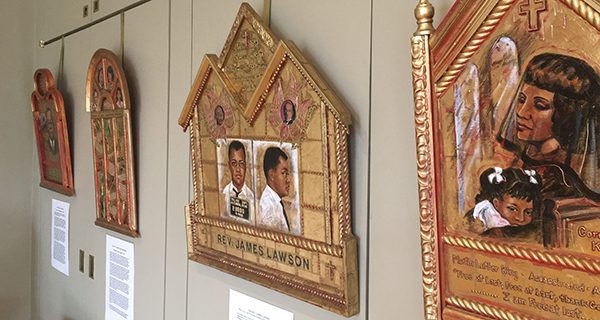[ccfic caption-text format="plaintext"]
By Katrina Margolis
Hometown Weekly Reporter
The first word that came to mind after seeing the “Icons of the Civil Rights Movement” exhibit was “striking.”
Inside of First Parish Needham sat 30 original paintings depicting civil rights icons in the tradition of Russian icons. The paintings were done by Pamela Chatterton-Purdy and are also featured in a book she and her husband, David Purdy, recently published of the same name. The exhibit was the focal point of an Icons Weekend, which also included a film about the icons, a lecture, and morning worship led by Reverend Purdy.
The Purdys participated in the 1965 Selma march as young white parents. They adopted a non-white child for every biological child they brought into the world. The Icons Weekend, in addition to their newly published book, told the story of their mixed race family, as well as their deepening sensitivity to racism and growing awareness of the need to dispel white privilege.
The exhibit weaved together the experiences of African-Americans and white Americans, some known and many unknown, who have been a part of the long march towards justice. The use of the “iconic” form, gold leaf with red background on wood panel, represents “the sacred nature of the people and events depicted in each of the 35 icons.”
The exhibit included 30 one-page narratives written by Rev. Purdy to accompany each of the works by his wife. “In 1971, we adopted our first three-year-old African-American son, adding him to our family of two biological daughters,” Ms. Purdy said. In 1975, at the fall of Saigon, they adopted their bi-racial son, his mother Vietnamese and his father a black American soldier.
“In the fall of 2007, I took a week long gold leaf workshop in New Hampshire,” she explained. She knew she wanted the work to be done in the tradition of icons. “Each icon was designed to highlight the uniqueness of each person or event. I began with an undercoating of red paint, which I deliberately allowed to break through the gold leaf, symbolizing the Holy Spirit and the blood sacrifice.”
The works were visually striking, and the dichotomy between modern figures represented in an old world style made the viewer re-evaluate the way these figures are seen.


















